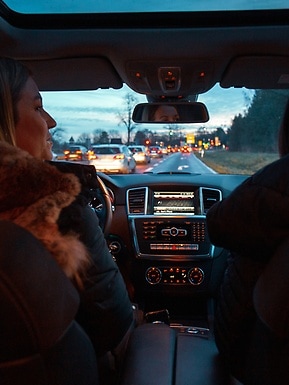Surveys show that during long drives most people take a break every three to four hours. Many of them use these breaks, lasting between 15 and 20 minutes, to have a snack at a service area. If we apply these findings to the distance covered, we find that the consumption to be recharged at each stop amounts to between 80 and 100 kilowatts. The 350 kilowatts provided by IONITY thus make it possible to reduce the charging time to the length of a 15-minute coffee break. The EQC, with its maximum DC charging capacity of 110 kilowatts, currently needs around 40 minutes to recharge its battery from almost empty to 80 percent charge.
Apropos DC charging, what’s the difference between it and normal AC charging, and what do these abbreviations stand for? Alternating current (AC current) from the grid must first be converted into compatible direct current (DC current). This process requires a converter, whose size is in direct proportion to its charging capacity. In the case of high-speed charging, the converter’s dimensions mean that it makes more sense to accommodate it outside the vehicle. The conversion now takes place not in the car but directly at the charging point. As Dr. Susanne Koblitz explains, "The fundamental challenge that we have with this external conversion process is that the charging station must generate precisely the voltage that the battery requires. However, this voltage changes constantly according to the battery’s state of charge." She uses the image of a concert hall filling up to illustrate these fluctuations. The first audience members to arrive have to first of all get their bearings in the empty space, so they need a little longer to find their seats. Once a few seats have been occupied, people find it easier to orient themselves. However, the last 20 percent of concertgoers once again need more time to get to their seats because they have to work their way through the seated people.











